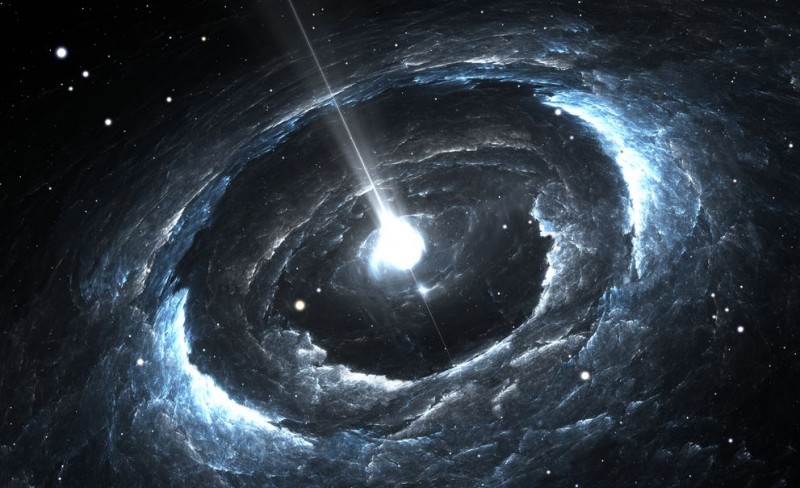
The universe is a vast expanse that has intrigued humans for centuries. With its mind-boggling size and mysterious phenomena, it continues to be a source of fascination for astronomers and cosmologists alike. In this article, we will delve into some of the most astounding facts about the universe, exploring topics ranging from enigmatic black holes to mesmerizing neutron stars.
The Vastness of the Universe
The universe is incomprehensibly vast, with billions of galaxies, each containing billions of stars. It all began with the Big Bang, an event that sparked the expansion of space and time. The sheer scale of the cosmos is enough to leave anyone in awe of its grandeur.
The Mysterious Black Holes
Definition and Formation
Black holes are captivating cosmic entities with gravitational forces so strong that nothing, not even light, can escape their grasp. They form from the remnants of massive stars that undergo a supernova explosion. As their cores collapse, they become dense points in space, creating black holes.
Event Horizon and Singularity
The event horizon is a boundary surrounding a black hole, beyond which escape becomes impossible. The singularity lies at the center of a black hole, where gravity is infinitely strong. Understanding these aspects has been a significant challenge for scientists.
Supermassive Black Holes
At the centers of most galaxies, including our Milky Way, lie supermassive black holes. These giants can have masses equivalent to billions of suns and play a crucial role in shaping galaxies and their evolution.
The Enigmatic Neutron Stars
What are Neutron Stars?
Neutron stars are the remnants of massive stars that have undergone supernova explosions. They are incredibly dense, containing the mass of the sun within a city-sized radius. Their gravitational pull is intense, and they have unique properties.
Formation and Characteristics
When a massive star exhausts its nuclear fuel, its outer layers are expelled, leaving behind a dense core. This core, composed mainly of neutrons, becomes a neutron star. These stars have fascinating characteristics, such as rapid rotation and strong magnetic fields.
Pulsars: Lighthouses of the Cosmos
Some neutron stars emit beams of radiation from their magnetic poles. As they rotate, these beams act like cosmic lighthouses, and when they point towards Earth, we observe pulses of radiation, leading to the discovery of pulsars.
Cosmic Phenomena: Supernovae
Supernovae are explosive events that occur when massive stars reach the end of their life cycle. These titanic explosions can briefly outshine entire galaxies and are essential for the dispersal of heavy elements, which form the building blocks of planets and life.
The Expanding Universe and Dark Energy
The universe has been expanding since the Big Bang. Dark energy is a mysterious force driving this expansion, and it counteracts gravity's attractive pull between galaxies. This discovery has revolutionized our understanding of the cosmos.
Dark Matter: The Invisible Mass
Dark matter constitutes about 27% of the universe, yet it remains invisible and elusive. Its presence is inferred through its gravitational effects on visible matter, but its exact nature is still one of the greatest unsolved mysteries in astrophysics.
The Search for Extraterrestrial Life
The Drake Equation
The possibility of life beyond Earth has intrigued humans for ages. The Drake Equation attempts to estimate the number of advanced civilizations in our galaxy by considering various factors, such as the rate of star formation and the likelihood of planets with life.
Exoplanets and Habitable Zones
Astronomers have discovered thousands of exoplanets (planets outside our solar system) and identified "habitable zones," where conditions might support liquid water—the essential ingredient for life as we know it.
The Fermi Paradox
Despite the vast number of potentially habitable planets, we are yet to make contact with extraterrestrial civilizations. The Fermi Paradox explores this apparent contradiction and raises thought-provoking questions about the existence of intelligent life in the universe.
Cosmic Microwave Background Radiation
The cosmic microwave background (CMB) is the afterglow of the Big Bang, detectable as faint microwave radiation permeating throughout the universe. Studying the CMB has provided crucial insights into the universe's early stages and its composition.
The Great Attractor
The Great Attractor is a gravitational anomaly that influences the motion of galaxies in our cosmic neighborhood. It acts as a massive "pull" towards a region of space, and while its exact nature is still debated, its significance is unquestionable.
The Multiverse Hypothesis
The idea of a multiverse suggests that our universe is just one of many universes, each with its physical laws and constants. This hypothesis, though speculative, arises from various theories in cosmology and quantum mechanics.
The Future of Astronomy
Advancements in Technology
As technology progresses, so does our ability to explore the cosmos. Innovative telescopes, space probes, and observatories continue to expand our knowledge of the universe.
Space Exploration and Colonization
Humans are increasingly looking towards space exploration and the potential colonization of other celestial bodies, such as Mars. Exciting ventures lie ahead as we continue to push the boundaries of our cosmic understanding.
The universe is an astonishing and captivating place, filled with wonders beyond imagination. From the enigmatic black holes to the mesmerizing neutron stars, each cosmic phenomenon adds to the beauty and complexity of our universe. As our understanding evolves, so does our sense of awe and appreciation for the vastness and mysteries that lie beyond our blue planet.
Chandrayaan-3 Updates: ISRO Performs Final Earth Orbit-Raising Maneuver
KARGIL DIVAS: Top Ten quotes related to the Kargil conflict
Subway India outlets drop tomatoes from menu citing THESE reasons